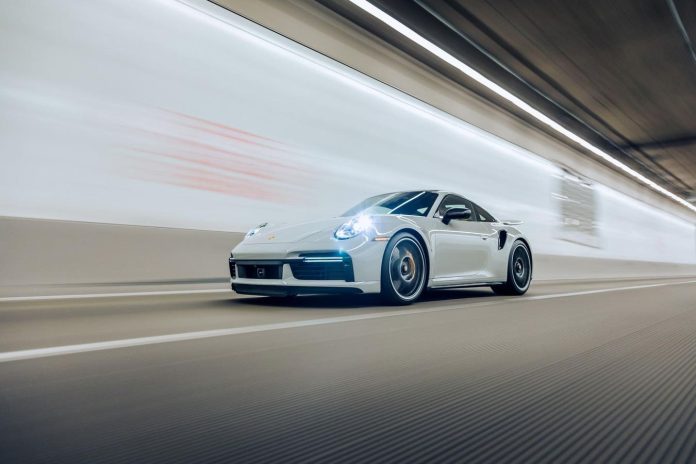Porsche 911 Turbo S
Porsche was once almost Ferrari-like in its ability to weather financial storms with impunity but the storied luxury sportscar and SUV maker’s profitability is under threat after over-estimating electric vehicle sales.
And problems are multiplying. Analysts want Porsche to concentrate on its still highly successful and profitable 911s sports cars and cut back on the luxury sedans and SUVs.
Porsche’s huge profits from China are melting away as local brands raise their game. Porsche could also find itself under tit-for-tat tariff pressure as China and the EU squabble over EV exports. As EV sales fall behind expectations, the U.S. would seem to be a natural home to give its highly profitable range of internal combustion engines a new lease of life. This might look less viable if President Trump’s determination to reform what he considers to be a long-term violation of tariff rules by the European Union leads to either a massive increase in tariffs or an extended period of no trade at all; or both.
Chairman Oliver Blume is also CEO of Volkswagen, which spun off Porsche in 2022. He is now being urged to make way for a leader who can devote all his energies to fixing the problems. Meanwhile, higher tariffs with the U.S. could force Porsche to set up a factory there. It may well be joined by the likes of VW’s Audi.
“A deteriorating narrative in China, re-emerging trade tensions, and a confirmed slowing of electric vehicle momentum have all added to risks to a still complex – and in some instances underperforming supply chain,” Berenberg Bank of Hamburg said in a report.
The bank said it had expected 2024 to be a transition year for Porsche with margins rebounding in 2025.
But Porsche announced early in February it expected a profit margin of only between 10 and 12% this year, below investors’ expectations of 14% and well below the mid-term target of between 17 and 19%. The share price took another dive, and for investors the performance since last April has been horrendous with a fall of more than 30%.
A 1:18 scale model of a 1964 Porsche 911 made by Auto Art.
Porsche also said it will spend €800 million ($833 million) revitalizing jettisoned ICE models and plug-in hybrids. Sales of the Taycan EV have slumped. It also said it was negotiating the dismissal of its finance and sales chiefs. Volkswagen still owns 75% of Porsche. The new ICE models will include updated Cayenne and Macan SUVs and Panamera sedans which were slated to be electric only in the next iterations. A planned SUV bigger than the Cayenne, originally just an EV, will now get an ICE version.
Last October, Porsche announced a cost-cutting plan with 8,000 job cuts.
Berenberg Bank said pressure on the Porsche share price will continue until it can demonstrate sustainable margins of over 17%. Investors expect more information after full financial results are announced March 12.
“Until then, we lower our operating profit estimates by about 20% for 2025-2026, and downgrade our rating to “Hold”,” Berenberg Bank said.
Frank Schwope, automotive industry lecturer at the University of Applied Sciences FHM Hannover, agrees it’s time for CEO Blume to devote all his energies to VW.
“Porsche and Volkswagen cannot be run as part-time jobs. It’s time for Oliver Blume to concentrate on Volkswagen and for another CEO to take over Porsche. Then better times can come again. The electric car market will pick up speed in Europe this year. Porsche is an exclusive commodity. Porsche doesn’t have to worry as much about tariffs as mass manufacturers. In the future, Porsche could conceivably produce together with Audi in the USA,” Schwope said in an email exchange.
Investment bank UBS said shareholders would like to see a new Porsche CEO.
“It is our belief that Porsche in this challenging situation needs a full-time CEO,” UBS said in a research note.
Oliver Blume presenting ation the new Porsche Taycan all-electic car in September 2019. (Photo … [+]
Porsche might have to set up a factory in the U.S. because of the threat of U.S. tariffs.
“We estimate Porsche has 10 to 20% EPS (earnings per share) risk given its 100% EU production footprint. Investments into a localized U.S. assembly might be required. On a 12-month view, we think shares will be on a volatile sidewards path in a non-tariff scenario,” UBS said.
Porsche has already conceded that production needs to be cut back to about 250,000 a year from 2024’s around 311,000.
Investment researcher Bernstein said demand for Porsche EVs like the Macan Electric and Taycan Phase 2 had been underwhelming while ICE vehicle demand was surprisingly strong.
“Caught on the back foot like many of its peers, Porsche is redrawing its near-time product plans to ensure it can still offer ICE versions of the Cayenne and potentially an ICE version of the latest Macan,” Bernstein said.
Investment researcher Jefferies, describing Porsche’s recent actions as an overdue strategic reset, wondered if the company might move back to its sports cars and cut back on luxury sedans and SUVs. Jefferies pointed out that the classic 911 and its derivatives accounted for between 40 and 45% of Porsche profits from 15% of its sales.
Porsche Cayenne Turbo. Photographer: Qilai Shen/Bloomberg
Berenberg Bank said the worst may be behind Porsche shareholders, but they require some firm evidence including concentration on the 911 and cutting production. Perhaps even a divorce from VW.
“The guidance reset as well as likely management changes……. opens the door for revolutionary and supportive strategic options. These could potentially include a governance change away from Volkswagen, further re-emphasizing value over volumes, with a prioritization of the 911, higher customization, and right-sizing fixed costs to potentially accommodate about 275,000 units, down from 300,000 currently – notably via a ramp-down in China,” Berenberg Bank said.




